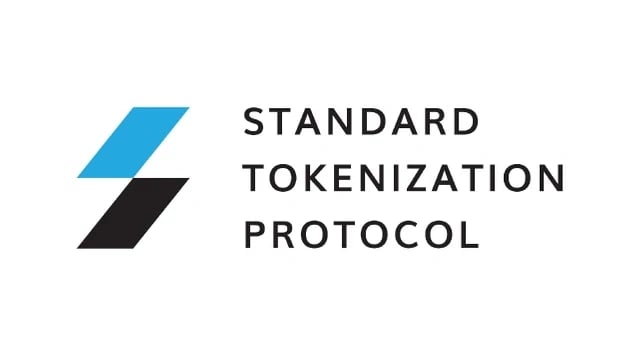订阅 wiki
Share wiki
Bookmark
STP Network
STP Network
STP网络 (STPT) 是一个去中心化的数字资产发行平台,由STP代币驱动,该代币促进了在全球多个司法管辖区内以符合监管的方式进行代币发行。 [1]
概述
标准代币化协议 (STP) 网络提供无需代码的工具和基础设施,以简化跨多个区块链(包括以太坊、Polygon、BNB链和Klaytn)的DAO的创建和管理。STP最初于2021年作为Verse Network在EVM兼容平台上推出,旨在改善去中心化决策、跨链互操作性、可扩展性和运营效率。2022年,它推出了BNB链应用侧链 (BAS),该侧链提供高吞吐量和低交易费用,以支持更具可扩展性和安全性的DAO运营。
STP还通过开发自治世界 (AWs)(用于游戏和元宇宙环境中持久用户交互的实时链上环境)扩展了传统DAO用例。截至当时,STP支持超过440个DAO,涵盖去中心化治理、游戏、电子竞技和AI社区。原生代币STPT作为一种实用资产,旨在减少DAO生态系统中的碎片化,并通过Clique平台实现无需代码的DAO创建和管理。该工具提供了一个中央仪表板,用于监督多个DAO并集成了合规性功能。STPT还用于发行许可的ERC-20代币,这些代币在链上执行发行者特定和监管规则,从而实现合规的资产代币化和跨境所有权转移。 [7] [8]
品牌重塑
2025年5月,在社区批准的提案之后,STP网络更名为AWE网络,标志着从协调基础设施向自治世界的战略转变。品牌重塑包括从$STPT到$AWE的1:1代币互换,总供应量没有变化,以及对网站、视觉形象、社交媒体和所有生态系统引用的更新。
AWE网络专注于实现可扩展的、AI驱动的自治世界,其中数千个代理使用并行处理和GPU优化等先进技术进行协作。这种转变反映了STP自2019年推出以来的发展历程——从DAO工具和身份系统到AI代理和多代理环境——包括AWNS(一种去中心化身份协议)以及用于能够学习和交互的AI代理的基础设施。品牌重塑使项目的身份与其新方向和生态系统目标保持一致。 [9] [10]
特点
STPT标准

STP网络的STP标准是一个开源标准,它定义了在遵守必要法规的同时,如何生成、发行、发送和接收代币化资产的所有权。构建在STP标准之上的所有内容都使用该协议的链上合规性验证器来验证是否符合相关法律(例如KYC、AML、认证等)以及任何发行者特定的要求(包括所有权集中度、持有期和投票)。验证器委员会发挥咨询作用,以确保合规性验证器执行最新的法规。STP网络允许资产以完全合规的方式在各个司法管辖区和平台之间自由流动。 [4]
STP 2.0
STP 2.0是在Polkadot上开发的合成代币化协议,它支持创建和交易代表来自多个区块链网络的代币的合成资产(ST-Assets)。它支持跨链价值转移,并允许用户构建跟踪各种代币标准中资产组的多链指数。该平台最初发行这些指数,旨在稍后使用户能够自定义它们。Polkadot的基础设施旨在支持互操作性并提高交易效率,与以太坊相比。 [4]
STPT集成
STP将其稳定币USTP与Curve Finance集成,以启动USTP/USDT元池。该元池支持USTP和其他稳定币(包括USDT、USDC和DAI)的基础池之间的交易,从而为STP生态系统内的USTP提供更深的流动性。流动性提供者可以将这些稳定币中的一种或多种贡献给该池,从而获得整个群体的敞口。此举是STP通过与已建立的DeFi协议合作来扩大其在去中心化金融中的影响力的更广泛努力的一部分。 [5]
USTP
USTP是STP生态系统和STP DAO中使用的稳定币,作为去中心化治理结构的一部分发挥作用,其中STPT持有者影响关键协议决策,包括与USTP及其相关DeFi平台相关的决策。它使用户能够追求收益机会,应用DeFi策略,并在生态系统内外(例如Blockzone和ChickenSwap)的各种平台上进行交易。USTP由STPT过度抵押,以减轻市场波动期间清算的风险。 [5]
STP代币

STP网络的平台代币STPT旨在协调网络参与者并支持核心协议功能。它需要用于多个用例,包括支付发行费用以创建STP标准代币,这些代币代表部分合法所有权,并通过合规性验证器遵守合规性要求。STPT还用作gas来执行交易期间的合规性验证,并启用权益证明系统,持有者可以通过质押代币来验证监管合规性来赚取奖励。治理由代币持有者选举产生的验证器委员会管理,验证器通过维护合规性验证器的适当功能和法律一致性来赚取STPT。
AWE代币
2025年5月,STPT以1:1的比例被$AWE取代,后者在Base上运行,并支持AWE网络中的核心功能,包括治理、模拟成本、代理打赏、推理以及通过World.Fun与基于AI的环境进行交互。 [6] [9]
合作伙伴
发现错误了吗?
